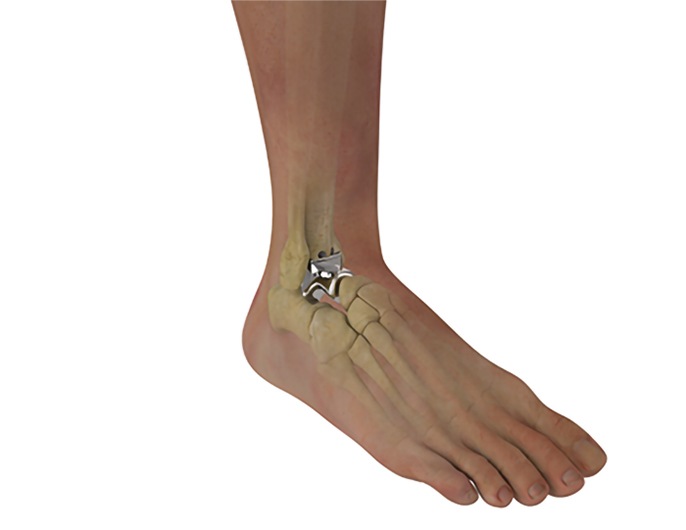
Blog Total Ankle Replacement
If you’ve been struggling with chronic ankle pain due to injury or arthritis, your physician may have recommended total ankle replacement as a solution. This procedure replaces the damaged elements of the ankle joint with prosthetics in order to provide immediate pain relief. And that’s the good news! A pain-free life is possible again and you’ll be able to enjoy all the benefits of it after your surgery and recovery are complete.
So, what’s the bad news? Well, there really isn’t any. But there are a few things you should know about total ankle replacement recovery. This article will help you to become aware of the potential risks as well as the steps to take to avoid complications so that you can have a smooth procedure, a speedy recovery and get on to enjoying life – as soon as possible!
Possible Risks of Ankle Replacement Surgery
This approximately 1-2 hour surgery (depending on the severity of the arthritis) is considered safe, successful and is widely known to be a prefered solution among surgeons that specialize in foot and ankle. However, like any major surgery, there are some potential risks to keep in mind. The list below contains some potential problems that are mostly preventable through a proper recovery process. Potential risks include:
- Failure of the bone to heal to the ankle replacement
- Infection
- Complications with the wound site
As mentioned, being committed to following instructions throughout your recovery and rehab process will be a key aspect to staying healthy and getting back to normal as quickly as possible. Proper recovery will also greatly contribute to your ability to prevent these potential risks.
Our Top 5 Tips for Total Ankle Replacement Recovery
1. Keep Swelling at a Minimum
Some swelling will inevitably occur after surgery, but you can do your part to keep it as controlled as possible. For the first two weeks after surgery (the approximate time it takes for your incision to heal),Whenever you are resting and especially while you are sleeping, keep your foot raised above the level of your heart to help reduce the swelling. The best way to know that your ankle is high enough is to follow the following simple rule: your knee should be at the level of your heart and your ankle above the level of your knee. Use pillows to do this and keep your heel free of any pressure.
2. Use Your Crutches
After your surgery, you’ll be discharged with crutches and you should continue to use them until your physician gives you the ok to walk without assistance. Putting full weight on your new ankle too soon could prevent it from healing correctly so be sure to follow all instructions when it comes to using your crutches or any kind of brace that you’re given.
3. Do Your Physical Therapy
If your surgeon orders physical therapy for you, be sure to do it! If you’re having your procedure done by a Rothman Orthopaedic Institute physician, then your physical therapy will probably also be through Rothman, which means you know you’re getting the very best care. Be committed to your exercises and stretches so you can train your new joint how to move and function properly with the maximum range of motion.
4. Call the Doc at Any Signs of Complications
Take your total ankle replacement recovery seriously. If you notice anything wrong or feel that there is reason to call your doctor, then there probably is! Don’t take any chances. If you experience severe swelling that is not decreased by elevating the foot, numbness or tingling in your toes, foul smelling drainage from the wound site or if you have a temperature, it’s time to call.
5. Be Patient
You will have just underwent an operation and you’ll need time to rest and heal. You will probably have low energy after surgery and that is completely normal – use the time to rest! Ask for help whenever you need it because you’ll be learning how to navigate around on a brand new joint. Be sure to drink plenty of water to stay hydrated and work on getting at least several small meals per day, even if you don’t have an appetite at first. Proper nutrition is extremely important to ensure everything heals appropriately.
Remember that everything will go back to normal in time, but during your recovery phase, take the time and make the commitment to really healing well. Your procedure will most likely result in a significant decrease in pain and a significant improvement in your ability to move and function normally. We have 3 locations in Lake Worth, Boynton Beach and Wellington Florida. Contact us at 561-967-6500.





